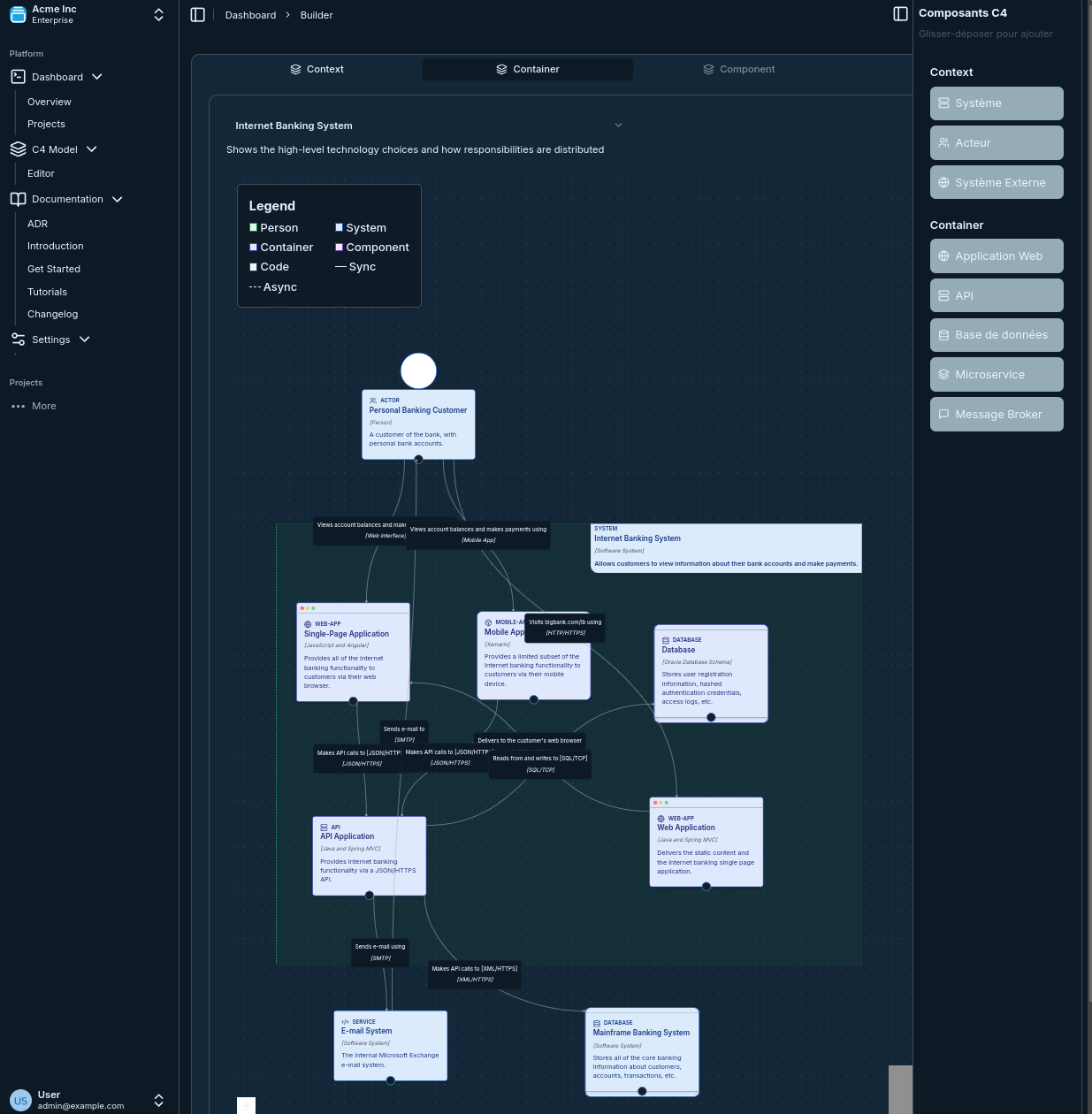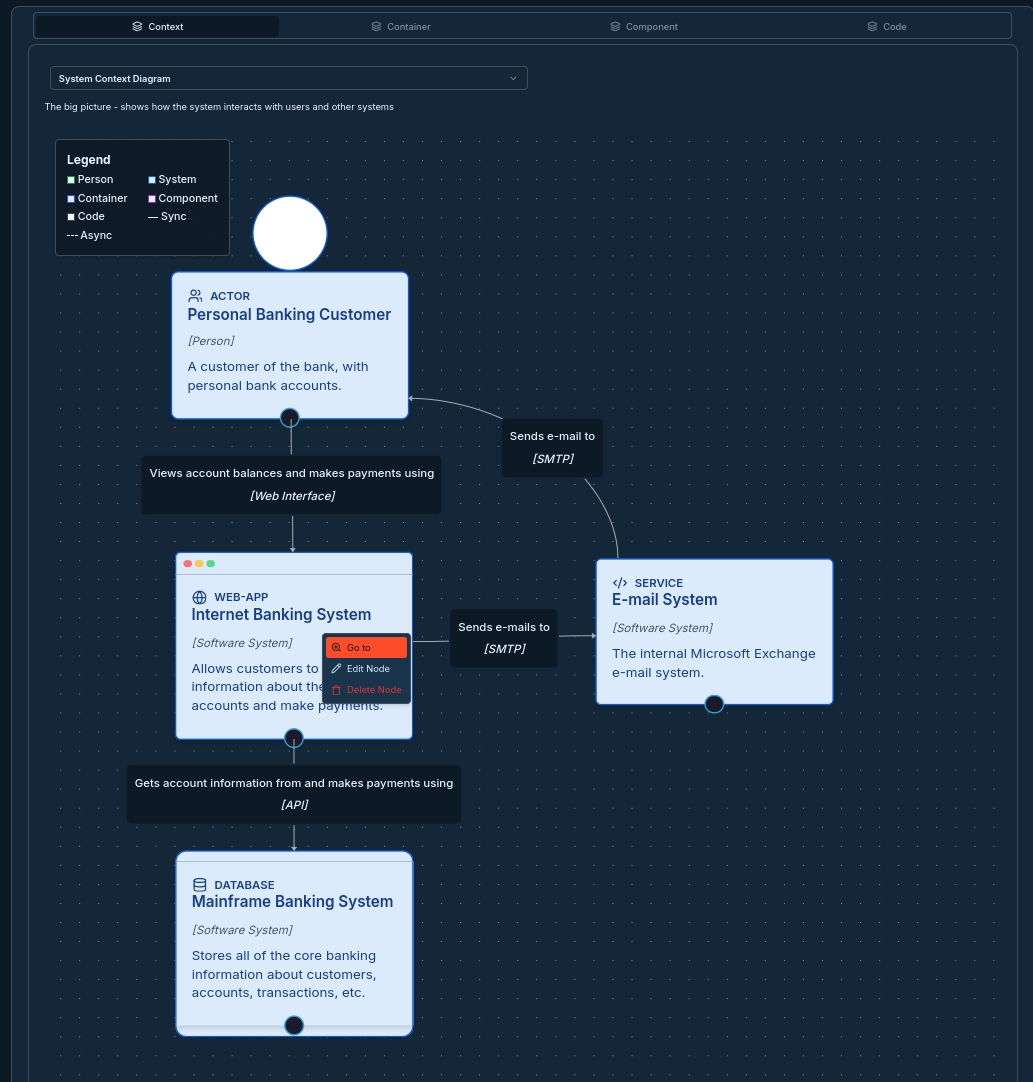Understanding the Four Levels of the C4 Model
Here is the detailed breakdown of the C4 Model's four abstraction levels! This page is part of our comprehensive guide on C4 Model Architecture and will provide examples and implementation guidance for each level.
The Four Levels
The C4 model consists of four levels: Context, Containers, Components, and Code. Each level provides a different perspective on the software system.

Level Breakdown
- System Context - High-level system interactions
- Containers - Application/service boundaries
- Components - Internal structure visualization
- Code (Optional) - Implementation details
Related Content
- Best Practices for Effective C4 Model Diagrams - Another resource in our C4 Model series
Detailed Overview
System Context Level
The System Context level provides a high-level overview of the system and its interactions with external entities. This level is crucial for understanding the system's place within the broader ecosystem.
Container Level
The Container level zooms into the system to illustrate the applications and data stores within it. This level is essential for understanding the high-level structure of the system.
Component Level
The Component level further focuses on the internal components of a container, mapping them to code abstractions. This level is useful for detailed design and implementation discussions.
Code Level
The Code level provides the most granular view and is often represented by UML class diagrams. This level is optional but can be useful for detailed implementation documentation.
Master Each Level
Deep dive into specific C4 levels:
- Context Level: C4 Context Diagram Guide - System boundaries and interactions
- Container Examples: Real-World C4 Examples - See all levels in action
- Complete Tutorial: C4 Model Tutorial - Step-by-step learning
C4 vs Alternatives
Compare C4 to other approaches:
- C4 Model vs UML - When to choose each
- Comprehensive C4 Guide - Full architecture approach
Integration and Tools
Enhance your C4 workflow:
- Architecture Decision Records - Link decisions to diagrams
- Open Source C4 Tools - Find the right software
Conclusion
Understanding the four levels of the C4 Model is essential for creating clear and comprehensive architecture diagrams. By mastering these levels, you can effectively communicate your software architecture to both technical and non-technical stakeholders.
